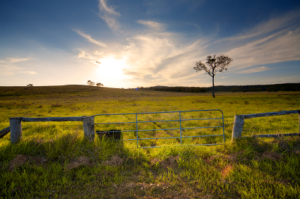What is Affecting Our Children? First Stop: Nutrition.
 In our original post, we talked about what is affecting our children’s learning and living and realized it really involves what we eat, how we live and the choices we make. So for digestible purposes (yes, pun intended), I have decided to break this down and focus on key areas. The first being nutrition. This area is VAST and truthfully, I was struggling to figure out how to break it down reasonably and of course, someone came along with a gift at the perfect moment. Our doctor was talking to the kids about nutrition during their annual exams last week and he spoke of the three biggest culprits – wheat, dairy & sugar. I figure why create something new, let’s follow these 3 first and see where it goes. So, this post will involve wheat and more specifically, gluten.
In our original post, we talked about what is affecting our children’s learning and living and realized it really involves what we eat, how we live and the choices we make. So for digestible purposes (yes, pun intended), I have decided to break this down and focus on key areas. The first being nutrition. This area is VAST and truthfully, I was struggling to figure out how to break it down reasonably and of course, someone came along with a gift at the perfect moment. Our doctor was talking to the kids about nutrition during their annual exams last week and he spoke of the three biggest culprits – wheat, dairy & sugar. I figure why create something new, let’s follow these 3 first and see where it goes. So, this post will involve wheat and more specifically, gluten.
What is Gluten?
So what is the big deal? Really – most of us grew up eating wheat and had absolutely no side effects, so why is wheat, namely gluten, getting such a bad rap these days?
Gluten is a protein composite found in foods processed from wheat and related grain species, according to the definition in Wikipedia. Gluten gives dough its elasticity, helps it rise, and gives it shape. It makes the grain more stable and lengthens its shelf life.
It doesn’t sound too bad, a protein is good and if it’s always been around, why do we have to be concerned? Well, it has not always been around AND it’s been changing over the last handful of decades. Refer to www.doctorauer.com for a complete history of gluten.
Briefly, over the course of the last century, grains have made it into the forefront of our diets due to 3 main reasons:
- Advances in technology for the processing, shipping & storing of grains;
- Alternative due to food rationing of meat & dairy during WWII;
- Low cost option to fresh produce, meat & dairy for families on a budget.
Additionally, food corporations are adding gluten to gluten to extend food supplies and to create a ‘high-protein’ food product, so this additive as well as the processing techniques, cause the grain products we eat today to have little similarities as those consumed many decades ago.
So, we really have not been eating it forever and the little we did consume decades ago is of little comparison to what we consume today. But still, why do we care?
Gluten & the Body
The best book on the market that I have found (thank you Janine) is The Gluten Connection by Shari Lieberman. It discusses how & why some people are sensitive to gluten and how to control this sensitivity. It’s very straightforward and accessible. It’s available on Amazon for about $12.
However for purposes of this post, here’s a quick snapshot. ‘A review paper in The New England Journal of Medicine listed 55 “diseases” that can be caused by eating gluten. These include osteoporosis, irritable bowel disease, inflammatory bowel disease, anemia, cancer, fatigue, canker sores, and rheumatoid arthritis, lupus, multiple sclerosis, and almost all other autoimmune diseases. Gluten is also linked to many psychiatric and neurological diseases, including anxiety, depression, schizophrenia, dementia, migraines, epilepsy, and neuropathy (nerve damage). It has been linked to autism and attention deficit disorder (ADD).
Gluten sensitivity is actually an autoimmune disease that creates inflammation throughout the body, with wide ranging effects across all organ systems including your brain, heart, joints, and digestive tract. ‘ (Mark Hyman, MD.)
Yikes. Now the question becomes, why would we ever eat it? Unfortunately, the answer is because it makes food taste yummy and it’s in almost everything.
Where is Gluten?
Gluten is found in a TON of foods from breads, cereals, pasta, crackers, pizza, baked goods to soy sauce, barbeque sauce, salad dressing and cottage cheese. Yes, even cottage cheese has an ingredient named carrageenan that acts like gluten. It’s also used as a thickener in soups.
It is found on stamps & envelopes, in cosmetics, licorice, gum, beer, cheaply distilled liquor, tea bags, and even in the coffee flavor Toroni syrups.
How can we eliminate or at least, minimize gluten?
Eliminating or Minimizing Gluten
It helps to know that not all people who are sensitive to gluten need to become completely gluten free. I don’t think a doctor would say this, but to be realistic, minimizing gluten must be better than eating it all the time. So, if you can only minimize, then let’s start there. Now this advice is NOT for people who are celiac or who have NO tolerance for gluten. Most people have too much gluten and their bodies become overloaded, so allowing the body to digest gluten on a less frequent basis should be helpful.
The easiest way to begin reducing gluten is to eliminate it in its most intrusive form – pasta, crackers, cereals, breads, pizza and baked goods. Now, there are yummy tasting substitutes and there are nasty ones. We are lucky that nowadays, there are excellent pastas, crackers, cereals and there are first-rate baked goods.
If you have the luxury of time, meaning you are minimizing gluten over a period of time, then my advice is to substitute slowly and get used to certain substitutes and then continue on with another one.
Good, Better, Best
Now in the first post, we promised to put things into good, better, best categories.
This chart is based upon the nutritional value in the good, better, best categories and not necessarily the taste. In fact, most of the items in the good category are pretty yummy.
|
Food Category |
Good |
Better |
Best |
| Pasta | Ancient Grains, Heartland pasta, or Bionature pasta brands | Potatoes, yams or beans as substitute | Zucchini – slice it very thin, sauté with organic olive oil & herbs & use it in place of pasta |
| Crackers | Sesmark, Nut Thin, Glutino, or Schlar cracker brands | Mary’s Gone Crackers, Food Taste Good Chips, or almond flour homemade crackers * | Baked cheese, zucchini slices, cucumber slices, or kale chips |
| Cereal | Glutino & Enjoy Life Foods brands | Oatmeal (GF) or low fat granola (GF) | Eggs – boiled, scrambled, frittata, omelette w/ veggies |
| Breads | 3 Baker’s, Udi’s, Rudi’s & Against the Grain brands | Ezekiel sprouted grains | Romaine lettuce wraps or Nori |
| Pizza | Rudi’s brand | Flatbread Company | Zucchini crust pizza ** |
| Baked Goods | Udi’s & Rudi’s brands | Almond Flour recipes * | Organic Dark Chocolate andFresh Fruit |
* the Gluten Free Almond Flour cookbook by Elana Amsterdam (again Thank you, Janine). There are recipes for muffins, scones, breads, tarts, quiche, pies, cookies, brownies & smores – something for everyone.
** Zucchini Pizza Crust (from Donna Klein’s The Gluten-Free Vegetarian Kitchen)
2 to 2 ½ cups grated raw zucchini (about ¾ lb)
Salt
2 eggs
1 cup shredded gluten-free part-skim mozzarella cheese
Freshly ground black pepper, to taste
Preheat the oven to 375F (190C). Lightly grease a standard-size nonstick baking sheet with sides. Place the zucchini in a colander set in the sink and sprinkle liberally with salt; let drain for about 15 minutes. Rinse under cold-running water and drain well. Transfer to several layers of paper towels and squeeze to thoroughly dry. Transfer to a large bowl and add the eggs mozzarella, and pepper; toss well to thoroughly combine. Transfer to the prepared baking sheet, pressing mixture evenly into the sheet with your fingers. Bake in the center of the oven until light brown and crisp, 12 to 15 minutes. Use as directed in recipe.
(It’s really important to squeeze as much of the liquid out of the grated zucchini as possible before mixing with the other ingredients)
In Closing
It takes time, commitment, & effort to change the eating habits of an entire family. Keep focusing on moving along in the right direction. Replace one thing and go to the next one.
For full disclosure, my family is not completely gluten free yet. We are each at varying stages – I have been mostly gluten free for 3 years (I say mostly as I have not gone to the dressings & sauces stage). My son is not close at all as we are still working on pasta & crackers. My husband and daughter are somewhere in between. We have conquered pasta & crackers and are navigating the breads & desserts now.
I keep remembering that we are farther along than we were a few months ago and we will keep moving in the right direction.
So, remember – be kind to yourself.


An excellent pasta substitute: Sauteed artichoke hearts (canned is fine), with onions and mushrooms is also nice. Michele
This is great Kim. Thanks!
We’ve switched to Ezekiel Bread for our PB & J eater. Yes! I and making kale chips at home is super easy and yummy.
May I also suggest http://en.wikipedia.org/wiki/Buckwheat . This is an excellent grain very popular in Russian and the old USSR. I believe it’s also gluten free.
Oh, excellent – thanks for the advice. I will definitely check it out.